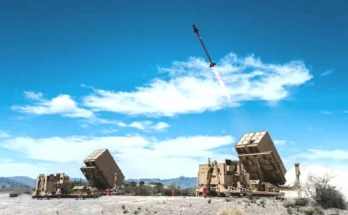
As the U.S. Navy begins its 2019 Force Structure Assessment, the consensus is that the service will hold steady at plans to increase the fleet to 355 ships. This size fleet is considered the minimum number that will face possible threats from China, Russia and other adversaries. As the United States’ largest warship builder, Huntington Ingalls Industries stands ready to build these ships.
Signs of this growth are starting to materialize in HII results. For 2018, the company’s sales were $8.2 billion, up almost 10 percent from $7.4 billion in 2017. Net income for the year was $836 million, compared to $479 million in 2017. The majority of the company’s revenues – some 97 percent – are derived from the U.S. government. Backlog at year end stood at $23 billion, compared to $21.4 billion a year prior.
Perhaps the biggest example of this increased emphasis is the Navy awarding Newport News a $15.2 billion multi-ship contract to build two Gerald R. Ford class aircraft carriers – a huge block buy that hasn’t happened in more than 30 years. This bulk purchase is aimed at saving more than $4 billion across the program. Further, this buy will also allow the company to work more efficiently and accelerate production as the yard builds a carrier every three to four years. Prior to this, the construction cycle was five years, which appears to be the maximum the yard can be stretched without running into retention issues with regard to skilled workers and losing necessary design and production expertise.
HII has been steadily working to get the costs of its current carrier, the USS Gerald R. Ford (CVN-78), under control. It is reported to be $1 billion over budget. Over the past few years, much effort was placed on stabilizing CVN-78 costs and establishing a more effective cost-control environment for the CVN‑79 and CVN-80. This included evaluating existing work practices and examining other shipyards for concepts that could assist in controlling construction costs. The effort appears to be working, as some reports indicate that the CVN-79 will come in at $1 billion less than the CVN-78, exclusive of research and development costs, while the CVN-80 is expected to show further reductions in costs. Should the block buy prove out its savings, a similar approach could be adopted for the future CVN-82 and CVN-83 ships.
Ingalls Shipbuilding is also seeing signs of resurgence. In late 2018, the company was awarded a $5.1 billion contract to produce six Arleigh Burke class (DDG-51) Flight III destroyers. Previously, the company was awarded contracts for the next batch LHA-6 ships and a lead position on the upcoming LX(R) program. All told, Ingalls now holds contracts for four ship programs: the DDG- 51 Arleigh Burke class destroyers, the LHA-6 America class assault ships, the LPD-17 San Antonio class amphibious transport docks, and the Legend class national security cutters for the U.S. Coast Guard. All of these programs have seen steady funding and will grow under an increase in the Navy’s fleet size.
In its Technical Solutions sector, HII has remained very active adding new acquisitions – Fulcrum IT Services and G2 – to its portfolio. The company began investing in IT and cyber services firms in 2016 when it added Camber Corporation to its ranks. The move into this field diversifies the company into the growing information technology and cybersecurity domains. The various operations that make up the Technical Solutions segment provide professional services to a wide variety of government and commercial customers worldwide, many of which are outside the company’s traditional defense markets.
A military history enthusiast, Richard began at Forecast International as editor of the World Weapons Weekly newsletter. As the Internet grew in importance as a research tool, he helped design the company's Forecast Intelligence Center and currently coordinates the EMarket Alert newsletters for clients. Richard also manages social media efforts, including two new blogs: Defense & Security Monitor, covering defense systems and international issues, and Flight Plan, which focuses on commercial aviation and space systems. For over 30 years, Richard has authored the Defense & Aerospace Companies, Volume I (North America) and Volume II (International) services. The two books provide detailed data on major aerospace and defense contractors. He also edits the International Contractors service, a database that tracks all the contractors involved in the programs covered in the FI library. More recently he was appointed Manager, Information Services Group (ISG), a new unit that encompasses developing outbound content for both Forecast International and Military Periscope.




